

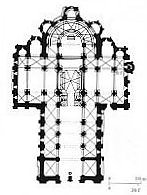
|
Typical pilgrimage church planLimitations of space may have determined the length of the nave--short by pilgrimage church standards but in other ways the church fits the characteristic formula: stone construction (fire proofing); nave with aisles for circulation of pilgrims: wide transept (the "nave" of the transept is as wide as the main nave); ambulatory in the choir with radiating chapels (here three although many pilgrimage churches have five); chapels off the transept; tunnel vaulting with transverse vaulting. | |
Soaring heightAlthough the nave of the church is short, the height is remarkable. It is 68 feet high, which is somewhat taller than the largest of the pilgrimage churches (St. Sernin in Toulouse). |
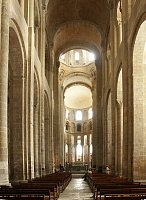
|
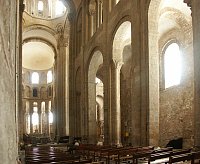
|
The nave arcadeThe tall arcade is carried on square piers with either flat pilasters or half columns on each side--this rhythmical alternation is actually seen in an alternate support system in some Romanesque naves. These pilasters or half columns extend up to the vaults. At the second level, galleries in effect serve as buttresses for the stone ceiling. | ||
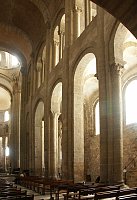
|
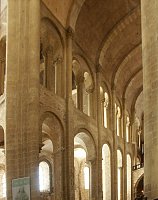
|
The dark naveThere is no clerestory so the nave is dark with light filtering in from the side aisles or from the windows to the outside in the second-story galleries. However, the octagonal tower at the crossing provides direct lighting. See below. |
Left: the barrel vaulting of the nave with rhythmical transverse arches; center and right: the octagonal crossing tower | ||
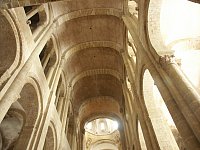
|
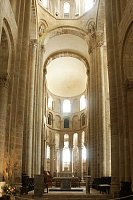
|
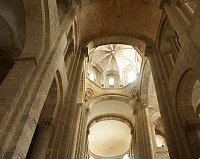
|
Left and center: side aisle from the west--looking toward the choir; right: side aisle from the east--looking toward the entrance | ||
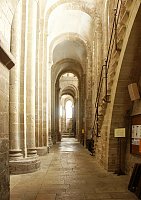
|
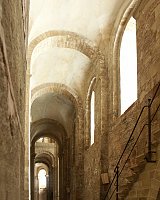
|
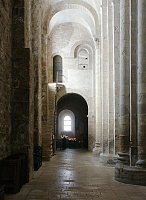
|
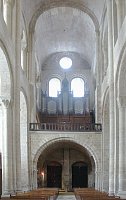
|
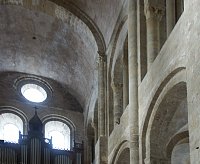
|
Nave from the choir--toward the narthex and entrance |
Bays near the entrance--west endThe gallery bay is comprised of paired arches resting on doubled slender columns in the center. |
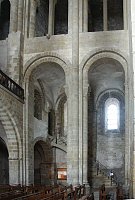
|
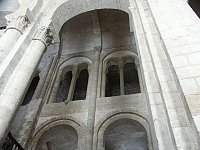
|
 Go to Sainte Foy Index.
Go to Sainte Foy Index.
 Click here to return to index of art historical sites.
Click here to return to index of art historical sites.
 Click here to return to index of artists and architects.
Click here to return to index of artists and architects.
 Click here to return to chronological index.
Click here to return to chronological index.
 Click here to see the home page of Bluffton University.
Click here to see the home page of Bluffton University.

